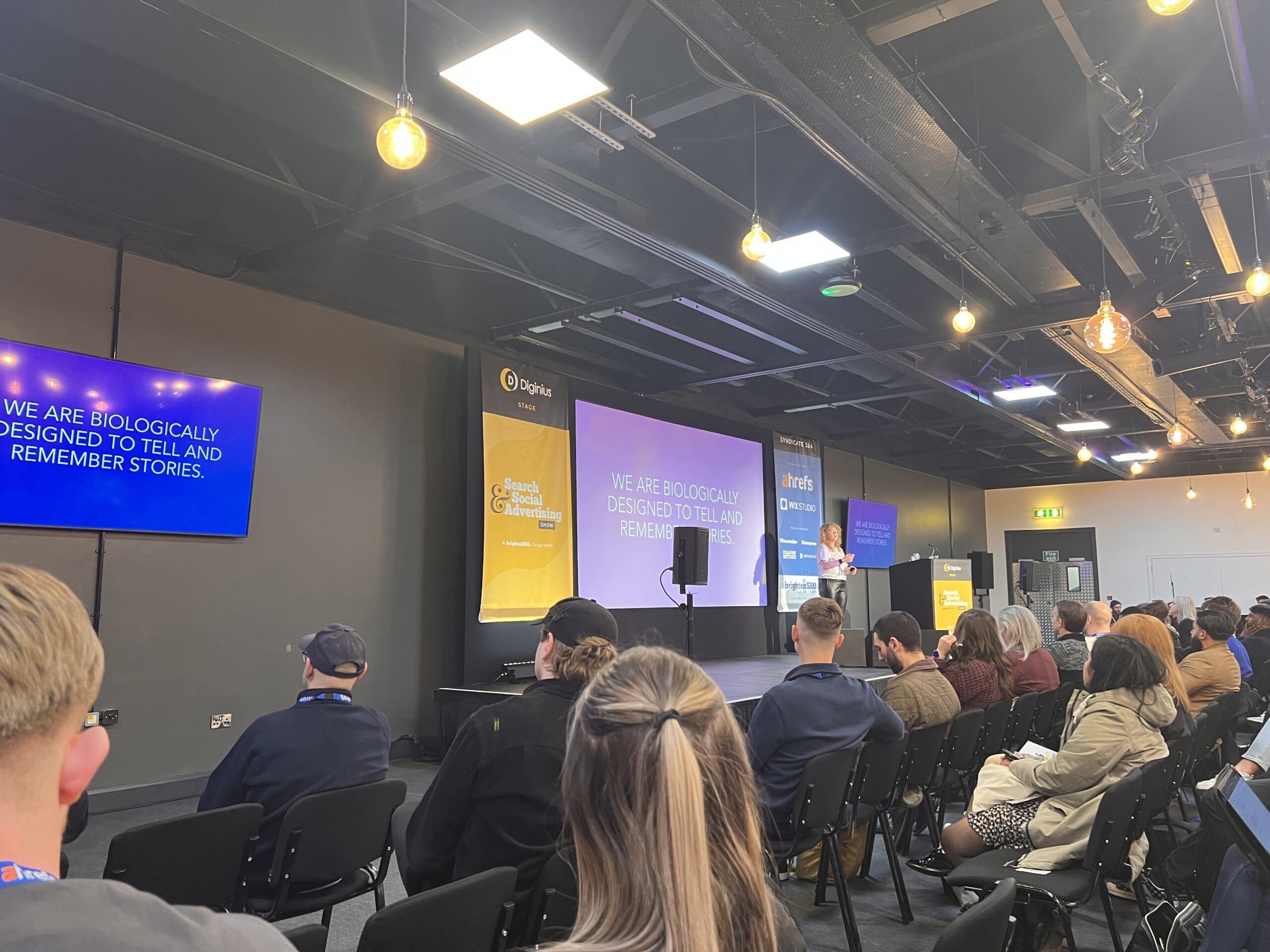
Rebecca Holloway
Senior Social Media Strategist
Rebecca is an award winning Senior Social Media Strategist who specialises in paid social media campaigns.

Awareness stage ads are massively underestimated in paid social media advertising. Here’s why your brand needs them to succeed.
Think of an advert. Any advert.
What came to mind?
Maybe it was the Go Compare singer, policemen with kids’ voices eating Haribo sweets, or the Old Spice man. Maybe, from some deep groove in your brain, a single phrase rang out, as easy to remember as your mother’s name or your earliest childhood memory: “should have gone to Specsavers.”
What do all these famous ads have in common? What makes them so effective?
After all, they barely talk about the product at all. They certainly don’t go into details about what makes it better than the competition or ask the audience to take action today. They aren’t going for the hard sell. They’re going for awareness.
In the world of TV advertising, the importance of awareness is taken as a given. It is the way to build your brand’s success.
In the world of paid social, however, the importance of awareness is fatally underestimated – especially in B2B.
In this article, I’m going to explore why awareness-focused ads are often ignored in paid social advertising, the impact this has on paid social campaigns, and why the awareness stage is vital for businesses who want to get leads through their social media marketing.

I recently had the opportunity to listen to Danielle Gipps at BrightonSEO. Her talk, “Treat your social strategy like TV advertising and start selling stories,” used the example of the famous Cadbury’s drumming gorilla advert to point out that, if we treated paid social like TV advertising, awareness would be taken much more seriously.
Underestimating the importance of awareness is one of the biggest blockers that I’ve seen so many clients put in the way of their own success.
It happens all the time. An organisation wants a paid social strategy, but when they’re given the opportunity to give feedback, that feedback is “cut the awareness stage ads and keep the ones that push for a conversion.”
It’s easy to see why many businesses in the B2B world think they need their paid social ads to result directly in leads. Often they’re a small team with a small budget and little time. Leads are their top priority.
But here’s the problem.
By focusing only on leads without using paid social to raise awareness of their brand, not only are they far less likely to get leads, but the leads they do get won’t be high value – they won’t be people who fully understand what their service is and are ready to sign on the dotted line.
There’s a disconnect. Naturally, if you’re working within a business, you’re going to have a strong understanding of what that business does. Many businesses believe that a single ad tied directly to a conversion is going to get their target audience up to date on who they are, how long they’ve existed, their primary services and so on.
It won’t. In fact, it goes against everything we know about the human brain and what it takes to convince us that a service is worth our while.
To understand why, we need to get into some marketing theory.

This is the awareness pyramid. Devised by organisational theorist, consultant and professor David Aaker, it is designed to map out the stages of awareness that are needed for a brand to become “top of mind”.
A “top of mind” brand is the one which instinctively comes to mind for a particular service. Think “fast food restaurant” for example, and you’ll think “McDonalds”. Think “taxi app”, you’ll think “Uber.” You get the gist.
Most brands sit at the bottom – the “no awareness” stage. Most people have no idea that the brand exists at all.
Many businesses consider becoming “top of mind” a top priority, because without strong awareness, the rest of the buyer journey can’t even begin. This is the end goal of a lot of TV advertising, but in paid social the entire awareness pyramid is often ignored to the massive detriment of a campaign’s effectiveness.
There are a few psychological findings that underpin the importance of awareness.
Ever find a song growing on you the more you listen to it? That’s called the mere-exposure effect.
In short, humans prefer things they’re familiar with. When it comes to generating leads and conversions, your business will be in a much better position if people are already familiar with it.
“Well,” you might think, “surely if we just start running ads that point straight to conversions, people will also become more familiar with our brand through those ads.”
This is where another principle is important. Repetition bias.
People are more likely to believe that something is true or trustworthy the more times that they’ve seen it repeated. In other words, before you can start convincing people that they need your service, they need to see your service. This is sometimes called the Rule of 7, which posits that it takes seeing the same message at least seven times for the human brain to fully digest and believe it.
So if you’re going to run awareness ads to take advantage of these principles and win your business more work, what should your awareness ads actually look like?

You need awareness ads in your paid social campaign. But what does this look like?
As the title of Danielle’s talk suggests, the answer is storytelling.
It’s time for a bit of shameless plugging. Iain Scott, Charlie Stewart and I have written a book on this exact topic – Socialise: Unlock your content, maximise social media engagement and win more work than ever before.
The whole point of the book (though I’d certainly suggest giving it a full read through) is that storytelling has the power to convince people in a way that nothing else does.
You need to tell stories around your brand rather than going for the hard sell. That’s how you raise awareness. That’s how, down the line, you get the right leads.
But there’s another problem.
Often, if a client is convinced that they need an awareness stage, they still want that awareness stage to resemble the later stages of their paid social campaign, directly inviting conversions and going for the hard sell right away.
You can create ads that compare your services to other brands, show off the work you’ve done for past clients and more – but if you haven’t used storytelling to create awareness of your brand beforehand, you’re missing out on a huge opportunity to bring in more (and more qualified) leads that already trust you and your work thanks to the psychological principles outlined in the section above.
Danielle made a great point in her talk that, in TV advertising, success is measured in viewers, not conversions. That world understands that awareness is vital. In paid social, however, if you tell a client that you’re able to get them 2 million impressions for £2k, the response is often “so what?”
TV advertisers understand the power of story-driven awareness.
Think back to those ads you thought of at the beginning of this article. They stuck with you. They all contained a story – no matter how small. They all made their brand top of mind.
If you’re ever in doubt, look out into the world – look at the adverts that are really having an impact, that are bringing in millions for their brands and making them top-of-mind for their service. As a great man once said: go compare.
You’ll find that your business isn’t wasting money by running awareness stage ads in your paid social campaign. You’re wasting money by skipping it, and expecting the same results.
Want to get in touch about building a social media marketing strategy for your business? Drop me an email at [email protected].

Senior Social Media Strategist
Rebecca is an award winning Senior Social Media Strategist who specialises in paid social media campaigns.
View my other articles and opinion pieces below
You know your business needs to use LinkedIn. With over a billion users, LinkedIn is the premier platform for connecting with your investors, customers, employees, industry peers and other stakeholders. You’ve only got one question. What should your organisation actually post about? So many businesses know that there are big benefits to engaging with their […]

“Thought leadership” has become an essential part of B2B marketing. Ever since Google’s helpful content update, it’s been more important than ever for your organisation’s team members to be producing high-quality, informed content in their areas of expertise. What is thought leadership? Articles, LinkedIn posts, blogs, videos – all of this comes under that umbrella. […]

Understanding multi-market paid strategies is crucial to the success of any social media marketing campaign. I recently had the opportunity to speak at the International Social Summit in Barcelona, collating experiences from the past year to share some advice for organisations planning their own paid campaigns across multiple regions. The Problem Running a multi-market campaign […]

When it comes to B2B social media marketing, few platforms are more misunderstood than TikTok. These misconceptions can lead to one of the most exciting platforms in social media marketing being written off by B2Bs – and huge opportunities missed. If you don’t take TikTok seriously enough, you will miss out to the businesses that […]
